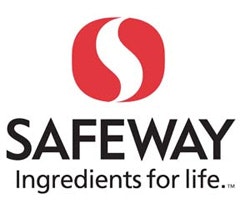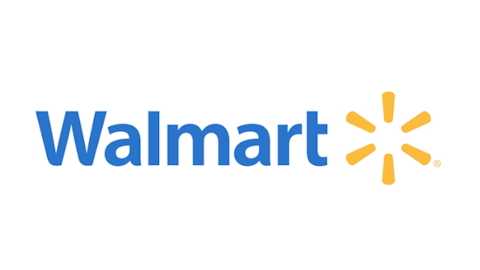In early September, Pleasanton, California-based Safeway Inc. (NYSE:SWY) announced its intention to spin off its minority stake in gift-card issuer Blackhawk Network Holdings. Despite being a relatively minor part of Safeway’s corporate ecosystem, Blackhawk is easily the company’s most profitable division. Last year, its revenues approached $100 million. Although Safeway has yet to release specific information about Blackhawk’s potential IPO price or debut date, it appears likely that the spin-off will be completed by the end of the second quarter of 2013. However, the company has cautioned that its exact timing is contingent on “market conditions.”
With over 1,600 large-format locations in the U.S. and western Canada, Safeway is one of the largest North American grocery-store chains. It sells a diverse lineup of food staples, processed foods, prepared foods, dry goods, basic hardware products, bulk items and certain specialty products. Like many large grocery stores, Safeway sells specialized beauty products, fresh seafood and gourmet deli meats. It also serves as a dispensary for over 300 types of gift cards and prepaid cards through its Blackhawk subsidiary. Most Safeway locations have an in-house pharmacy as well as a Starbucks outlet. Through a wholly-owned Mexican subsidiary, Safeway also operates about 180 “Casa de Ley” grocery stores in Mexico’s northwestern states. In 2012, the company earned $521.5 million on about $44 billion in gross revenues.
Blackhawk Networks is a gift-card operator that maintains an “open card” portfolio of at least $7 billion at any given time. The company markets gift cards and prepaid cards through multiple grocery stores and retailers in North America, Europe and Oceania. Its cards can be used as cash equivalents or at specific outlets like restaurants, retailers and even NBA venues. In 2011, the company experienced portfolio growth of 25 percent and is expected to achieve double-digit growth for the next several years. Most market-watchers peg Blackhawk’s value between $800 million and $1 billion.
How the Deal Is Structured
Although the management teams at both Safeway and Blackhawk Networks appear to be committed to this deal, few details about its structure and timing have been released. If nothing arises to delay or derail the deal, it appears likely to close before the end of the first half of 2013.
Unless the company’s other owners can be persuaded to relinquish their positions, any Blackhawk IPO would merely involve Safeway’s 49 percent stake in the company. It is expected that Safeway will relinquish at least 40 percent of its Blackhawk shares. As such, about 20 percent of the company’s equity would be released to the public. Under these conditions, Safeway could earn between $150 and $200 million as a result of the spin-off.
It is assumed that Safeway would leave the door open to future secondary offerings. Market-watchers further expect Safeway to use the deal’s proceeds to fund an ongoing share buyback program that has thus far resulted in the cancellation of outstanding shares worth $2.3 billion.
Complications and Legal Issues
At this point, no major issues have arisen to delay the deal. While it remains contingent upon the approval of Safeway’s public shareholders as well as Blackhawk’s private shareholders, these obstacles should not threaten the deal. Likewise, the spin-off is not expected to attract regulatory scrutiny. However, it remains to be seen whether it can be deemed tax-free under current IRS regulations. Such a ruling might not be forthcoming until the beginning of the second quarter of 2013.
Long-Term Prospects and Likely Outcome
2012 was a difficult year for many supermarket chains. Although consumer spending has improved dramatically, many North American shoppers appear to have switched their shopping allegiances from regional food-centric supermarket chains owned by companies like Safeway and SUPERVALU INC. (NYSE:SVU) to big-box discounters like Wal-Mart Stores, Inc. (NYSE:WMT) and Target Corporation (NYSE:TGT) . Giants like Wal-Mart and Target, with sales of $464 billion and $71 billion, are able to source food products in larger quantities and receive lower per-unit costs in many cases. Compared to Supervalu, operating margins at Wal-Mart and Target are about 3x larger.
Supervalu’s recent near-liquidation at the hands of Cerberus Capital Management is the most visible example of the declining health of many old-line supermarkets. However, it’s clear that Safeway’s apparent desire to divest from its non-core Blackhawk brand is linked to this trend as well. In fact, the chain’s earnings have dropped by at least 15 percent since 2010. As Wal-Mart and Target continue to expand their grocery and dry-goods offerings, traditional supermarket companies will need to adapt. Absent such flexibility, a wave of consolidation could rock the industry.
It is clear that Safeway’s shareholders approve of this proposed spin-off. News that a deal was in the works has caused the company’s shares to rise from early-September lows near $16 per share to $19.50 per share as of early February. For long-term Safeway stockholders, this represents a premium of about 22 percent.
Absent a pending spin-off, it is likely that Safeway’s shares would be headed on a steady downward trajectory. As such, the Blackhawk issue appears to be helping the company to a tremendous degree. Opportunistic investors who wish to profit from this news-driven price appreciation and get in on the ground floor of Blackhawk’s potential IPO would do well to watch Safeway at these levels.
The article Reorganization Likely In the Near Future originally appeared on Fool.com and is written by Mike Thiessen.
Copyright © 1995 – 2013 The Motley Fool, LLC. All rights reserved. The Motley Fool has a disclosure policy.





